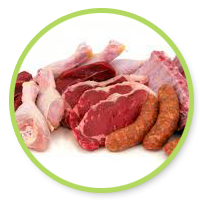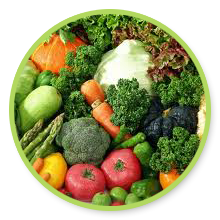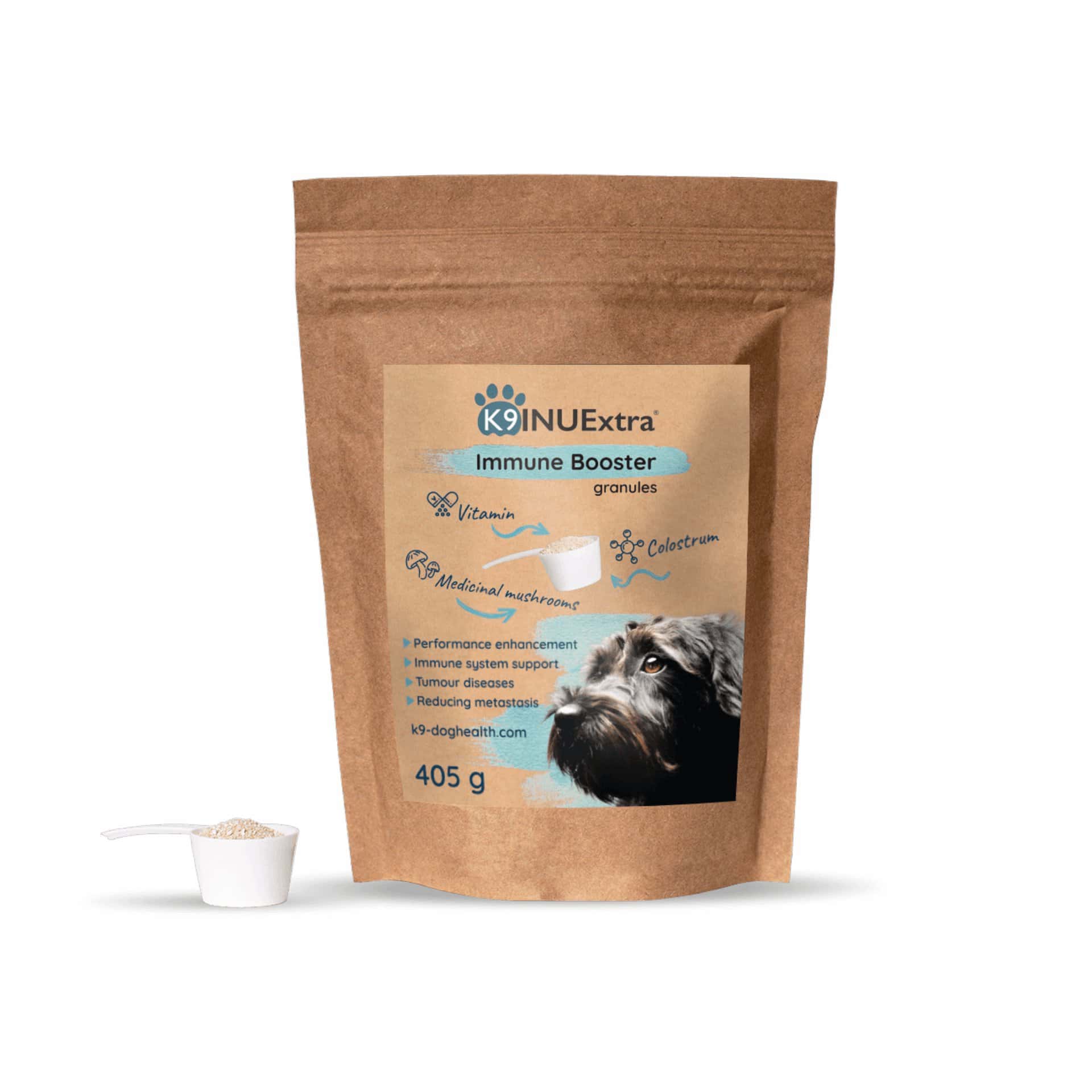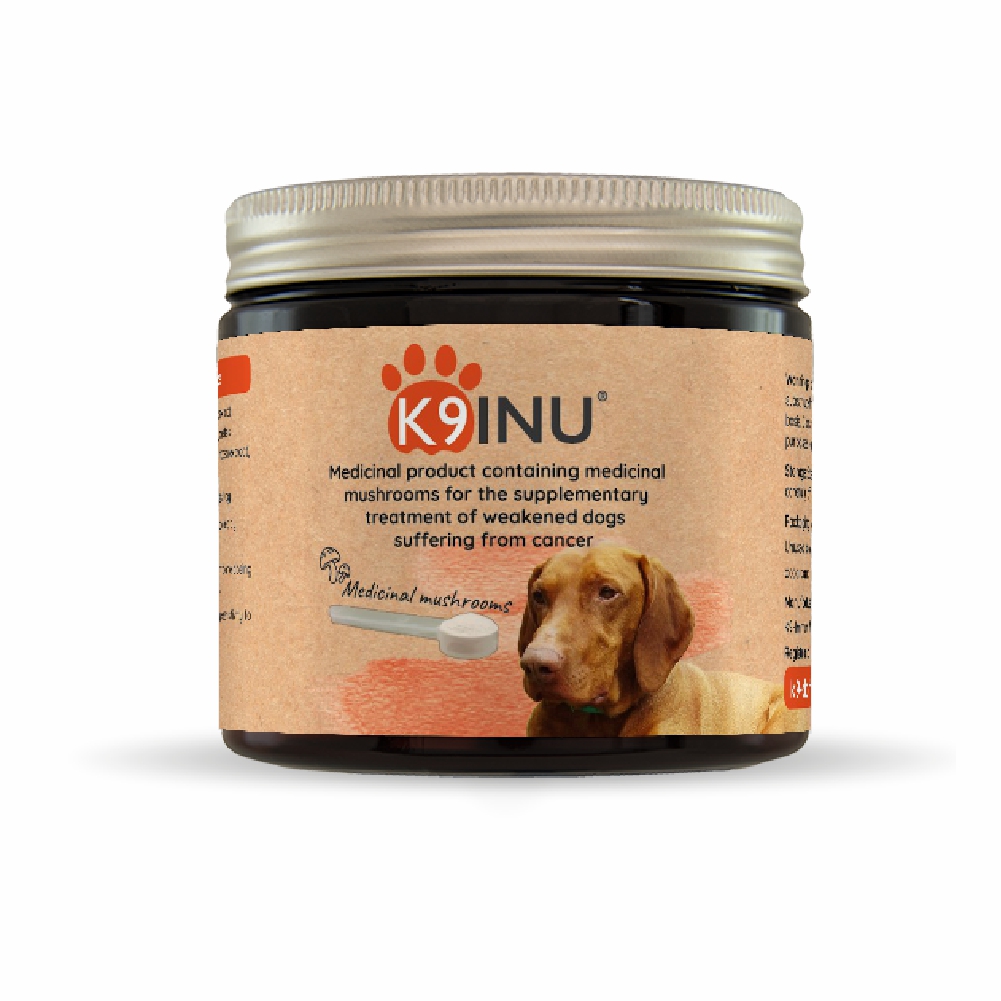Depending on the dog’s breed and the type of tumor, there are several therapies available for the treatment of cancer. However, regardless of the treatment applied, one of the most important weapons against cancer is the nutrition and proper feeding of the cancerous dog!
Every process in the body depends on the quality of the consumed food. If you want to achieve the best possible results in cancer therapy, you must provide your dog with the proper tools for fighting cancer and preventing further complications.
Dogs rarely die from cancer itself. They usually succumb to some secondary disease, typically caused by a tumor, such as liver or kidney failure, and the risk of developing these complications can be greatly reduced with an appropriate diet.
Feeding a dog with cancer and restoring the immune system
When a cancerous condition is diagnosed in our dogs, the first task is to restore the normal functioning of the immune system. The combined use of K9 Immunity™, K9 Transfer Factor™, and K9 Omega™ supplements provides effective support.
The beneficial effects of Omega fatty acids in preventing and treating cardiovascular diseases have long been known. However, it is less known that they can play a crucial role in preventing certain types of cancer. Freshwater and marine fish are very rich in these fatty acids.
K9 Omega™, distributed by Aloha Medicinals Inc., is their latest development. With its high purity and concentration, it ensures an adequate daily amount for dogs, thanks to its appropriate ratio of omega-3 to omega-6 fatty acids. (1 capsule of 1000 mg per 9 kg body weight.)
Feeding the a dog with cancer
The first rule for both cancerous and preventive diets is: LESS GRAIN!
The healthy and cancerous dog’s body produces a large amount of new tissue, but it requires sufficient protein and components suitable for cell membrane formation (Omega-3, Omega-6 fatty acids). If the diet lacks these, the body will draw the necessary amount from other areas, leading to muscle loss or even kidney or liver cancer.
However, these complications can generally be avoided by designing the right diet.
The dog’s primary food for the past 10 million years has been meat.
 Most commercially available dog food is made from rice, wheat, or corn. However, if we observe dogs in nature, we never see them grazing in rice or wheat fields. They are not born as herbivores, so their bodies do not produce the enzyme necessary for breaking down grains. Rice and corn are excellent (cheap) additives for dog food manufacturers but are not suitable for our pets.
Most commercially available dog food is made from rice, wheat, or corn. However, if we observe dogs in nature, we never see them grazing in rice or wheat fields. They are not born as herbivores, so their bodies do not produce the enzyme necessary for breaking down grains. Rice and corn are excellent (cheap) additives for dog food manufacturers but are not suitable for our pets.
Check the label
Check the label on your dog food. Almost every food contains some kind of grain, but there must be some kind of meat among the main ingredients, and grains should be lower on the list. If grains are listed at the front or among the main ingredients, choose another food! Just because a dog food is expensive doesn’t mean it’s good!
For a cancerous dog, the proper store-bought food should be supplemented with additional animal protein sources, such as canned sardines, cottage cheese, eggs, and any meat from hamburger to farm-raised chicken.
Remember, your dog is primarily a carnivore (raw), and it brings out the most when it eats what it was born to eat.
The high protein and essential fatty acid intake, combined with low carbohydrate content (preferably consumed raw), forms the basis of the correct diet!
But always consult your vet to ensure that your dog’s condition is suitable for a diet rich in fatty acids and protein, especially in cases of pancreatic, renal, hepatic, or spleen problems or predisposition to dysplasia.
For most cancerous dogs, a grain-free diet supplemented with cooked or raw foods can significantly improve their condition.
If your dog has mostly eaten cooked food and is curious about how it reacts to raw food, it’s advisable to gradually transition to a raw diet from meal to meal. Dogs have a much stronger stomach acid than humans, making them less prone to bacterial infections. Due to the strong stomach acid, they can digest bones, for example.
Feeding the the dog with cancer and BARF
The raw diet, or BARF (Biologically Appropriate Raw Food) diet, consists of 75% meat and 25% vegetables/fruits.
Ingredients:
- Raw bones – break cooked or smoked bones into small pieces!
- Meat – chopped or ground (chicken, turkey, pork, beef, etc.)
- Vegetables – broccoli, spinach, celery, peppers, cabbage, etc.
- Fruits – any apple, pear, citrus, etc. (no bananas)
- Other treats – whole eggs, flaxseed, garlic (in moderation), alfalfa, kefir, cottage cheese, yogurt, etc.
For example, a mix of yogurt and cottage cheese with fruits/vegetables is usually a favorite of dogs.
Recipe:
Correct diet for dogsOne week’s portion of raw meat patties for an active 23 kg dog:
- 1.8 kg of any, even multiple, raw ground meat,
- 2 cups (goat) milk or 1 cup yogurt or 1 cup cottage cheese,
- 3 eggs,
- 1 apple,
- 1 very small clove of garlic,
- 2 carrots,
- 0.7 kg mixed vegetables (e.g., broccoli, zucchini, cabbage, spinach)
Grind the ingredients, make meat patties like a hamburger, and freeze them.
Every dog has different nutritional needs. Generally, they eat about 2% of their body weight daily, but a more active or faster metabolism dog may consume 3-4%.
The above is just one example of numerous recipes that can be made from meat, vegetables, and fruits. A varied diet is good for the dog because it provides a variety of nutrients.
Feeding the dog with cancer and supplements
Other dietary supplements that enhance the effectiveness of chemotherapy
- E-vitamin 400 IU/day,
- Selenium – 100 µg/day,
- Beta-carotene – or raw carrot (if the dog eats it),
- Green tea extract (caffeine-free) 50 – 100 mg/day
- Grape seed extract
- Quercetin
While antioxidants improve the effectiveness of some chemotherapy drugs, other types of drugs can reduce their effects. Please consult with your oncologist about the applicable drugs.
Cell membrane stabilizers, such as Omega-3 fatty acids, gamma-linolenic acid, and Q10 coenzyme, are also important components. Antioxidants play an important role in both prevention and existing cancer.
However, do not give your dog vitamin C separately (unless your vet recommends it), as dogs’ bodies can produce the necessary amount.
Many veterinarians suggest that three days before or a week after radiation or chemotherapy, animals should not receive antioxidants. This is an older perspective and may not be the most current.
Feeding the cancerous dog is a crucial part of the treatment, so be sure to consult with your oncologist for the maximum effectiveness of the treatment.
For more information, visit our Dog Diseases page.






